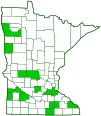Honeysuckle aphid
(Hyadaphis tataricae)
Conservation • Description • Habitat • Ecology • Distribution • Taxonomy
Conservation Status |
|||
| IUCN Red List | not listed |
||
| NatureServe | NNR - Unranked |
||
| Minnesota | not listed |
||
Description |
Honeysuckle aphid is rarely seen. It is most often identified by the witches’ broom it produces on its host plant. Adults are tiny, 1 ⁄32″ to 3 ⁄32″ (1.1 to 2.5 mm) long. They are pale yellowish-green to brownish-yellow or cream-colored, and are coated with a grayish waxy powder. |
Size |
Total length: 1 ⁄32″ to 3 ⁄32″ (1.1 to 2.5 mm) |
Similar Species |
Habitat and Hosts |
Ecology |
Season |
Spring to fall |
Behavior |
The larvae feed on the ends of stems, causing latent buds to become active and produce stunted growth. The excessive small growth at the end of the stem is referred to as a witches’ broom. Adults feed on leaves. While feeding, they emit a toxin that causes the leaf to fold over. They remain inside the folded leaves. |
Life Cycle |
Unlike most aphids, this aphid completes its life cycle on honeysuckle. It does not migrate to a secondary host. The female lays its eggs on the host, usually on tissue that is already damaged. During the summer, only females are born. As the days cool in the fall, sexual males and females are born. After these sexual adults mate, the female lays eggs which overwinter and hatch the following spring. |
Nymph Food |
Stems |
Adult Food |
Leaves |
Distribution |
||
|
Sources |
|
| 9/19/2025 | ||
Nativity |
||
Native to eastern Europe and Asia. Recently introduced in North America. |
||
Occurrence |
||
|
||
Taxonomy |
|
Order |
Hemiptera (True bugs, Hoppers, Aphids, and Allies) |
Suborder |
Sternorrhyncha (plant-parasitic hemipterans) |
Infraorder |
Aphidomorpha (aphids and allies) |
Superfamily |
Aphidoidea |
Family |
Aphididae (aphids) |
Subfamily |
Aphidinae |
Tribe |
Macrosiphini |
Genus |
Hyadaphis (honeysuckle-umbellifer aphids) |
Subordinate Taxa |
|
|
|
Synonyms |
|
Hayhurstia tataricae Hyadaphis tartaricae Neohayhurstia tataricae Semiaphis tataricae |
|
Common Names |
|
honeysuckle aphid honeysuckle witches’ broom aphid |
|
Visitor Photos
Share your photo of this insect.
This button not working for you?
Simply email us at info@MinnesotaSeasons.com.
Attach one or more photos and, if you like, a caption.
|
||
MinnesotaSeasons.com Photos
| Witches’ broom caused by the honeysuckle aphid |
|
|
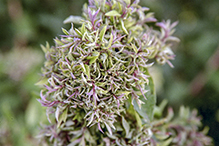 |
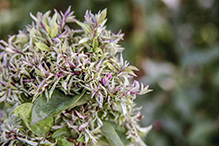 |
|
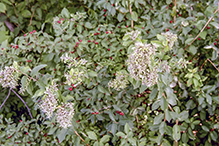 |
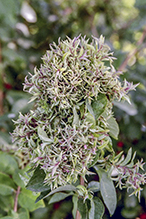 |

Slideshows

Visitor Videos
Share your video of this insect.
This button not working for you?
Simply email us at info@MinnesotaSeasons.com.
Attach a video, a YouTube link, or a cloud storage link.
Other Videos

Visitor Sightings
Report a sighting of this insect.
This button not working for you?
Simply email us at info@MinnesotaSeasons.com.
Be sure to include a location.

